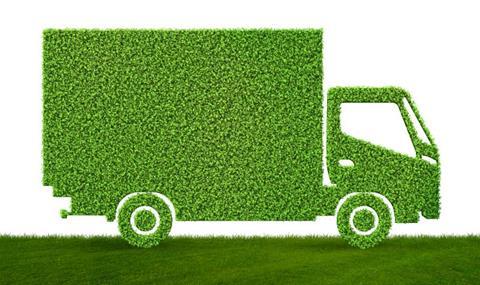
Industry heads have debated the pros and cons of biofuels, electric and natural gas during a panel discussion on reducing carbon emissions at the Commercial Motor Show.
Justin Laney, partner and general manager of central transport at John Lewis, outlined the merits of biofuel while Mervyn McIntyre, head of fleet at Hermes, explained why the company now has the largest range of CNG vehicles in the UK.
Also present was DPD marketing director Tim Jones who said 2020 had marked a major step forward in the parcel carrier’s commitment to electric vehicles, but that many barriers still needed to be overcome.
“Biofuels have a big role to play in the future,” Laney insisted, “and our ambition is to be fossil fuel free by 2028 and to save half a million tonnes of CO2 by 2030.”
Heavy trucks account for 80% of CO2 emissions, he added, but these make up only 15% of the John Lewis fleet.
He also revealed that a range of 500 miles was now achievable with biofuel and that 10-20 filling stations were being developed to add to the 30 already operating.
Remaining risks, he admitted, were in terms of timing and contingency - in the event of a filling station breaking down for example.
However, he said residual value between biomethane and fossil fuels was about the same with gas prices tending to track the price of diesel - which would gradually become more challenging to access.
Routine truck maintenance, he said, may also work out cheaper.
“I’m confident there’s enough biomethane out there and there’s plenty of scope for it with HGVs - it’s where it works best,” he said. “Electric for HGVs is still some way off. The future is the e-Highway system. At first I thought it was complete madness but now I’m convinced it’s the way forward. I’m not convinced by hydrogen.”
McIntyre admitted John Lewis had helped Hermes in its quest to make sustainability a priority.
“CNG is a usable fuel for a large part of our network,” he said, while conceding that the company has seen a 65% restriction on range against fossil fuel vehicles.
However, training courses had helped Hermes drivers understand the ease of refuelling. They had also been impressed by the significant noise reduction associated with gas trucks which has reduced sick days and the number of accidents.
Asked where he saw the future for alternative fuels, McIntyre said: “We’re continuing to trial a number of different electric vehicles – vans, EV rigids and CNG rigids as well.
“But we believe that gas may not be long-term solution. It may be hydrogen we see as the more long-term solution, or certainly a fuel cell product which will give you all the benefits of quick refuelling and none of the restrictions on distance of some of the other alternative fuels.”
Turning to electric, Jones said DPD was now looking to develop microsites for vehicles within city centres. However, he said acquiring these in London was “difficult and expensive” as they were often sub-let by the Dft, TfL or the local council.
DPD’s latest micro site test will be in Hull, he revealed.
Charging infrastructure and the availability of rapid charging also needed to improve, said Jones, adding that the company’s attempts to convert car park space to microsites was often dogged by planning permission issues.
Other barriers to electric, he said, were vehicle availability and price, with the Mercedes eSprinter currently valued at £55,000 and the VW eCrafter £60,000.
He also revealed that rather than sticking with tried and tested vehicle manufacturers, DPD had also considered new partnerships with EV specialists including Volta and Arrival.














